Hit hard by the Mediterranean climate crisis, Venice could be the first human settlement to fall. In a city whose very survival depends on the health of its lagoon, the upending of Venice‘s relationship with the water could herald the decline of the city and its ecosystem.
On the evening the water started rising, Vittorio was waiting in the storerooms on the ground floor of his grandparents’ home. Like every year, he had gone down into the bowels of the old Venetian building to raise furniture and dusty old paintings off the ground; it’s a ritual common to many residents of Venice.
Fashioned from a space opposite the imposing entrance hall to 17th-century warehouses, the area is filled with improvised furniture, empty bottles, and overflowing ashtrays. From here, Vittorio watched the water flow along the corridors and build up in the room, but when he realised something was different this time, it was already too late.
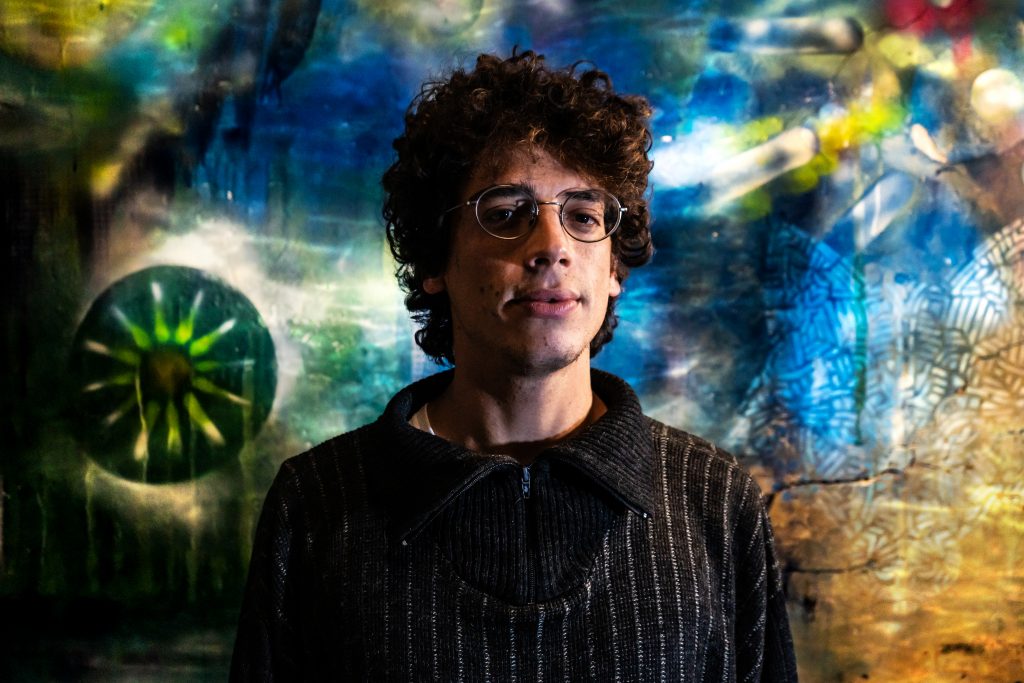
The high water of 12 November 2019 began like a normal rising tide. Official forecasts estimated a peak of 140 centimetres, but when the Scirocco wind trapped sea currents, the tide began rising at a rate of half a centimetre every minute.
For three days, Venice sank while sirens wailed. Reaching a peak of 1.89 metres, it was the second highest Aqua granda (as exceptionally high tides are locally known) in the city’s contemporary history. Today, carved here and there on Venice’s narrow streets are lines indicating the high-water mark reached that night.
Acqua alta (literally “high water”) is a Venetian phenomenon of tide peaks causing the partial flooding of the city centre. The lagoon invades the city for about 40 days a year. But with global warming causing rising sea levels, exceptionally high waters are an increasing occurrence.
Over the years, Venetians have prepared for rising tides as best they can. Despite having lived for centuries in an unpredictable lagoon environment, they are having to make extraordinary adjustments to cope with the challenges of life in the city today. Having built an empire from the unique body of water in which it stands, Venice has always been a place devoted to its ecosystem. The city’s survival was inextricably linked to the lagoon’s. It’s a cult that made Venice a sanctuary on the water for centuries. But when the sirens didn’t stop that night, the city learnt that the lagoon could threaten its very existence.
Analogue stories in digital archives
Today, what happened during the 2019 Aqua granda is documented in multimedia: we can hear water crashing against the Doge’s Palace while grainy images reveal the force of the waves.
To preserve them for posterity, thousands of accounts have been brought together in a huge open-source digital archive documenting the event from the point of view of those who lived through it. With this ocean of data and code, the Aqua Granda project lifts the lid on the history of Venice and its blood bond with its lagoon.
“More than an archive, it’s active remembrance,” explains Massimo Warglien, a researcher in digital and cultural heritage at Ca’ Foscari University of Venice. “We collected over 7200 multimedia files – including photographs, videos and audio recordings – with the idea of directly describing how a whole city experienced the events of 2019.”
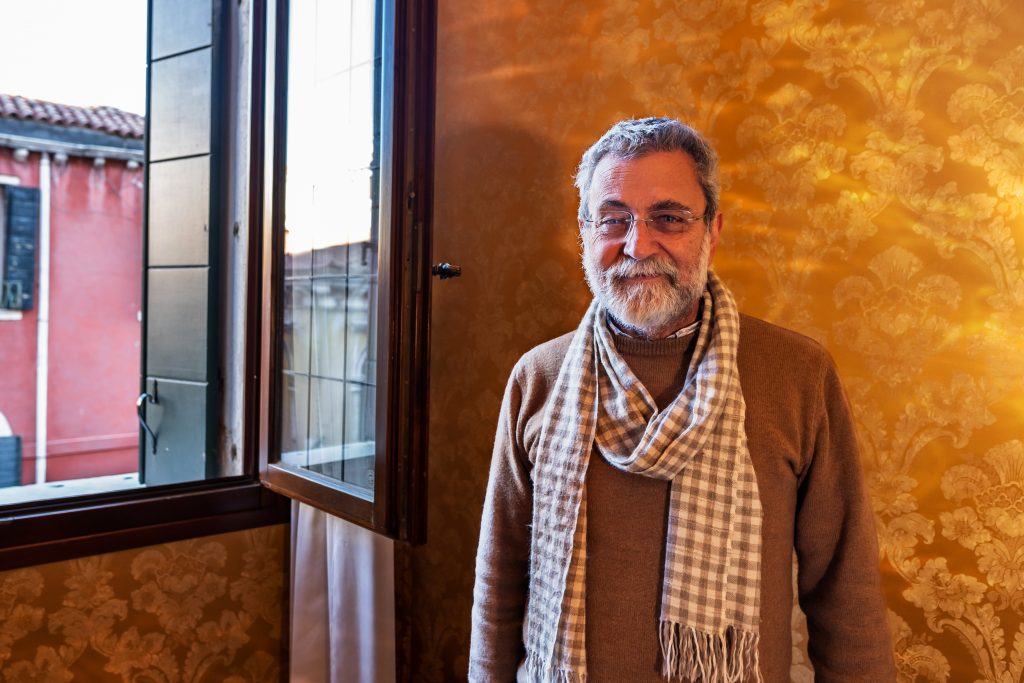
The highest Aqua granda in Venice’s history occurred on 4 November 1966. The tide reached a historic peak of 194 centimetres and when the waves finally subsided, they left behind evacuees and debris. In old TV news reports from the era, the black and white images are simply faded versions of the shots that we have of 2019: that’s how we know that the physical experience of the event was the same as it was 50 years previously. But now that our digital memories are in colour and we can see into the past, our understanding of events is far deeper.
In the digital archive, the collective account closes the gap between the events of 1966 and those of 2019, showing us how these extraordinary events have shattered residents’ perception of the lagoon.
Secular sea defences
In a room of the Doge’s Palace, there is an 18th-century oil painting by Giambattista Tiepolo in which the pagan water god Neptune presents a cornucopia bursting with coins and treasure as a gift to a young ladylike figure, a representation of the city of Venice. The painting celebrates the sacred bond between the city and the natural world that surrounds it.
“Today, Neptune’s gifts are a threat,” says Warglien. “Over time, humankind’s perception of the lagoon has changed, and will change again. We are witnessing a historic reversal in the role of the tide, which marks a momentous shift, something that has really changed the city’s long-standing relationship with the water. A relationship that must now be reinterpreted.”
1966 set a precedent that would separate Venice from its lagoon: it started that slow reversal in the relationship between people and nature in which the collective perception of water shifts from resource to threat. Epitomising this narrative is the MOSE, a system of storm surge barriers that open and close the lagoon. This complex system series of flood defences is designed to protect the city from high tides.
Construction work on the MOSE began in 2003, but it was only completed and became operational in October 2020, a year after the Aqua granda of 2019. For many, this is no coincidence. “If it hadn’t been for the 2019 disaster, we would still be talking and prevaricating about the MOSE,” notes Umgiesser Georg, a researcher at Italy’s Institute of Marine Sciences (CNR-ISMAR).
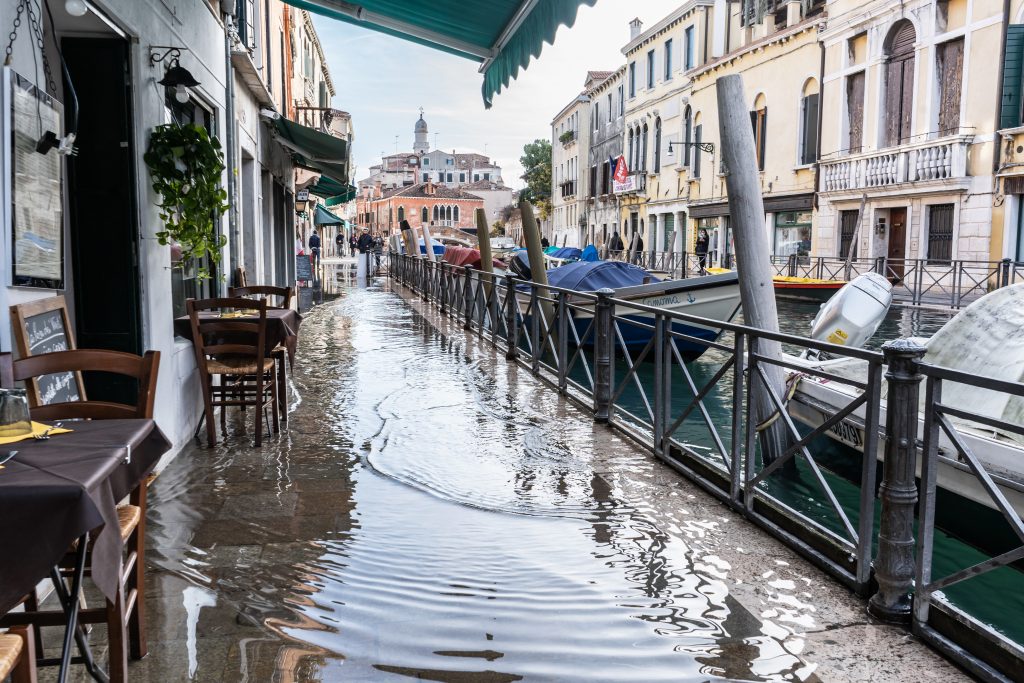
In a way, worsening environmental conditions in already fragile ecosystems have fuelled the separatist narrative. Although the causes of 2019’s Aqua granda are not all down to climate change, the data clearly shows an increasing frequency of high waters in recent years: “From 1875 to 2017, we had 18 exceptionally high waters that were over 140 centimetres. But between 2018 and today, there have been seven of them. 25 per cent of exceptionally high tides have occurred in the past three years. It’s obvious that we’re at a critical phase and that what we’re seeing is also due to climate change,” explains Umgiesser.
“After the panic of 2019, seeing the MOSE finally operational was a relief. But it is now worrying seeing the water not move for hours,” says Warglien. Last year, the MOSE prevented currents from entering the city for three days, which meant that the water in the canals, naturally subject to physical changes, was turned into a flat and lifeless surface.
The motionless water unsettled Venetians, as if warning that the city was on the precipice of entering the Anthropocene.
Although the causes of 2019’s Aqua granda are not all down to climate change, the data clearly shows an increasing frequency of high waters in recent years.
Anthropogenic mutations
In the Netherlands, tidal waters are controlled by a series of huge concrete blocks, an intricate system of floodgates, and other mechanisms. In the North Sea, flooding has long been the main climate threat to human settlements. After the devastating storm surge of 1953, the Dutch erected miles of concrete flood barriers. For more than 50 years, strings of big grey blocks in the sea have protected the country from the waves, but today the Netherlands is forced to rethink its relationship with the natural world. Significant biodiversity loss and the barriers’ effect on the ecosystem are encouraging the country to find solutions that work symbiotically with nature.
The Netherlands’ separatist experience highlights the dark side of a walled Venice; a dying ecosystem that gives way to further environmental crises.
“What will happen when we have to raise the MOSE every day?” wonders Warglien. “Even assuming a certain degree of tolerance by the lagoon, the economic impact on commercial traffic and port life, as well as the consequences on the balance of tidal flows and fish species seems obvious to me.”
Umgiesser makes clear that the MOSE is currently the only solution available to the city: “We have to use it because it’s the only thing we can do for now, but we’re the first to admit that, with climate change and rising sea levels, the MOSE will no longer work. By the end of the century, we may already see a 50 to 70 centimetres rise in sea levels, and it’s at this point that the lagoon will be more often closed than open.”
There was a time when saving Venice meant saving the lagoon too, but today the city faces a tough choice: “With climate change, we have to make a decision: do we want to save the lagoon or the city of Venice? If we save the lagoon, we leave the MOSE open and Venice is underwater. If, however, we want to save the city, we’ll have to close MOSE more and more often until at some point we’ll have to cut the lagoon off from the sea.”
The Netherlands’ separatist experience highlights the dark side of a walled Venice; a dying ecosystem that gives way to further environmental crises.
Conservation strategies
Yet the MOSE might not be a foregone conclusion for Venice’s future: “There are solutions other than the MOSE that we should think about. For example, one possibility being talked about is pumping water beneath the city’s subsoil, which might let us gain 30 centimetres, the exact amount lost over 150 years,” explains Umgiesser. But greater forecast accuracy could also help in managing the MOSE and the risks of high water.
For over 50 years now, the Italian National Research Council’s (CNR) Acqua Alta Oceanographic Tower has been gathering data on waves, tides and winds, along with many other variables. Built off the coast of Venice in March 1970, this metal structure stands in 16 metres of water and is one of the world’s few permanent open-sea research stations. After the Aqua granda of 1966, the city hoped it could save itself through scientific research.
“After many years of operation, we finally have a series of data points that are also useful for climate research,” explains Angela Pomaro, a researcher at CNR-ISMAR. “Having a uniform series of measurements for periods greater than 30 years is rare and very important for understanding how the climate is changing, along with the information that models give us. Furthermore, the data measured helps in developing ever more accurate models, which are fundamental for forecasting high water levels.”
But accurate models are not enough. During the Aqua granda of 2019, Venice’s unpreparedness for exceptionally high tides was laid bare. While it might have been scientifically impossible to predict the conditions that led to the storm surge that day, the lack of risk prevention and reduction plans on dry land was keenly felt: “In assessing climate risks, the city of Venice has limited technical and administrative capacities,” explains Julie Pellizzari, a young researcher in water and disaster risk governance. “Although Venice city council has close and productive partnerships with various scientific research centres, as well as receiving European funding for climate adaptation plans, the city still doesn’t have a full risk assessment plan that covers all of the municipality. For example, the most recent risk assessment is limited to the Mestre urban area, and the most recent underlying document for drawing up an adaptation plan now dates back to 2014. Adaptation plans are policy measures aimed at countering climate risks: risks that can’t be stopped, but can be mitigated by reducing their impact through adaptation measures to protect people and the environment. In 2019, there still wasn’t even a plan of this type that was able to respond to the needs created by the exceptionally high tide.”
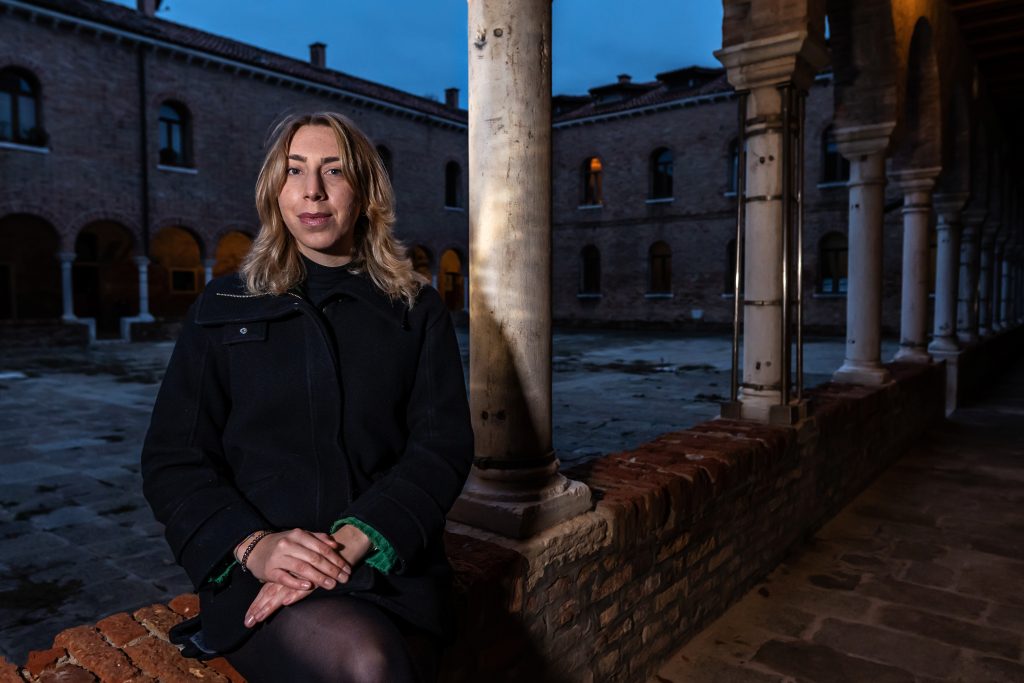
During that year’s high water, many recall that the civil protection department (the branch of Italy’s emergency services tasked with disaster response) was either absent, or sporadic and uncoordinated in its interventions. They tell of civil protection volunteers coming from outside Venice, unfamiliar with the city, asking locals for directions to Giudecca, but not even knowing that it’s an island. In the meantime, locals organised themselves as best they could: at noon on 13 November, a group of volunteers gathered in Rialto to start a relief effort across the whole lagoon. An appeal launched by the young members of the non-profit association Venice Calls spread quickly across social media; in the end, people came in their droves.
While volunteers waded across the city knee-deep in water, a small group of people – including Sebastiano Cognolato, the organisation’s founder and president – coordinated the teams of volunteers from an improvised command centre. This mobilisation of young Venetians spread right across the city. They were everywhere and did whatever they could. Once the emergency was over, Venice Calls continued its work to bridge the gaps left by local government.
“We realised that there isn’t a civil protection plan for high water,” explains Sebastiano. “There are a couple of programs for drying out churches but, for example, we don’t have any data on people who live on the ground floor: there are studies by Insula [Venice’s public works agency] that map streets in relation to sea level, but a survey looking at where the vulnerable live has never been done.”
Conscious of the flaws in the civil protection system, Venice Calls sought funding for a project to map vulnerable households in Venice so that the city is better prepared the next time an exceptionally high tide hits: “When the emergency phase was over, we leafletted households of Venetians living on the ground floor – typically hit hardest by high water – asking if they would need help in the event of a second storm surge. In general, those who answered were the frail, elderly, and people with disabilities”.
Coordinates for the post-climate apocalypse
Venice’s ecosystem may be an island with its own mechanisms and dynamics but it is also part of the much larger Mediterranean Basin. As such, it has much to tell us about the climate crisis in the Mediterranean, where the signs of climate breakdown are already evident.
“What we can see is that in the last 20 to 30 years, the surface temperature of the Mediterranean has risen by 1.5 degrees Celsius, with a clear uptick in extreme sea surface temperature events. This is how cloudbursts happen: through an increase in heat exchange with the atmosphere,” explains Rosalia Santoleri, director of CNR-ISMAR. “The Mediterranean basin undoubtedly experiences more frequent extreme heating events than other marine environments at the same latitude. This affects all coastal activities. That’s why cities by the sea, which are also the most populous, suffer a greater impact from climate change.”
In recent years, Italy has suffered worse and worse environmental disasters. While part of the country has been engulfed by unmanageable wildfires, the other has been battered by flash floods, torrential rains and hurricane-force winds: “Events which, from a hydrological point of view, show that the ecosystem is becoming ever more fragile,” concludes Umgiesser. Changes in nature’s balance that augur a not-so-distant future.
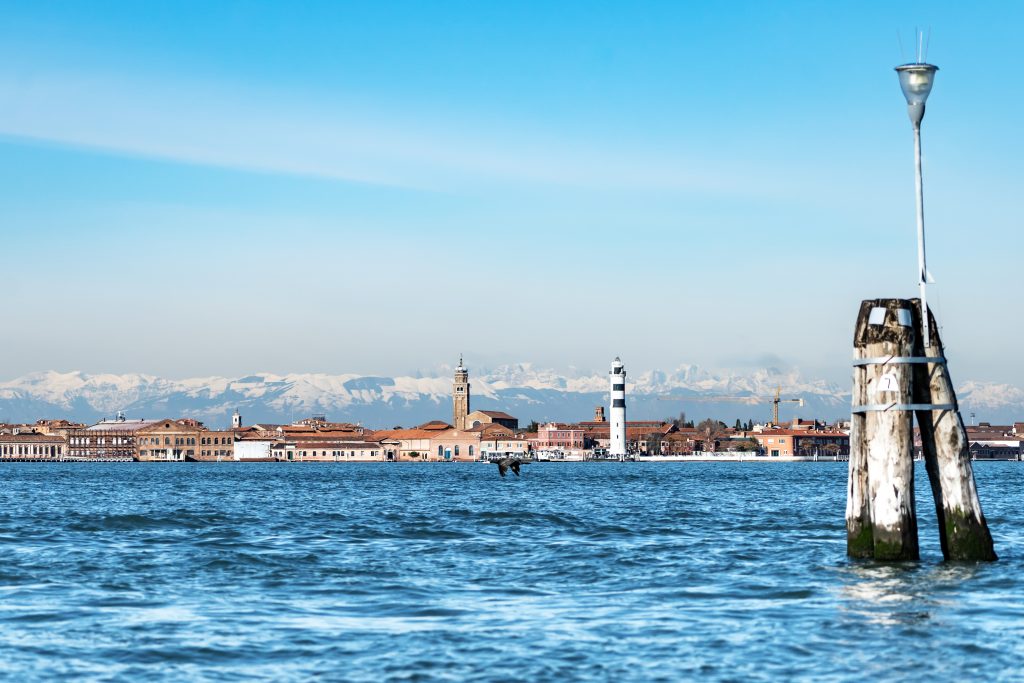
And yet, the lagoon has undergone profound change throughout history. “Centuries ago, they diverted rivers to prevent Venice from silting up, so the lagoon has clearly had to cope with manmade ecological changes on a number of occasions,” Warglien says. “Now another of these adaptation periods is about to begin for the lagoon system, and the problem is that adaptation is needed because it’s hard to imagine a city underwater.”
While change is inevitable, what the lagoon will look like in the future remains to be seen. “There are so many possible lagoon models that could emerge and these depend not just on physical factors but cultural ones too: how will it be used? By whom? For what? Will it become a water park? Or will it be somewhere inhabited, in harmony with nature?”
A government deaf to people’s wishes, and to readjustment oriented around nature and residents would set Venice on course of self-destruction. But for Warglien, the emphasis on preserving the city is helping to kill it: “A city that’s dead not just by definition, but in its aspiration. The idea of heritage is a trap: the city must be able to change, otherwise residents will leave because they’ve become part of a museum. We have to understand how to bring the city to life: that’s why the real issue is Venice’s governance. But how do we manage this change with institutions that aren’t open to changing course?”
With climate change, we have to make a decision: do we want to save the lagoon or the city of Venice?
Photos by Federico Ambrosini. All rights reserved.
